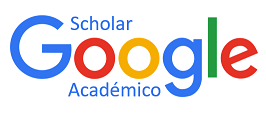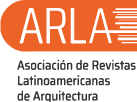Submissions
Submission Preparation Checklist
As part of the submission process, authors are required to check off their submission's compliance with all of the following items, and submissions may be returned to authors that do not adhere to these guidelines.- The submission has not been previously published nor has it been submitted for consideration by any other journal (or an explanation has been provided in the Editor's Comments).
- The Submissions file is in OpenOffice, Microsoft Word, RTF or WordPerfect format.
- Whenever possible, URLs are provided for references.
- The text is line spaced 1.5 lines; 12 points font size Times New Roman; italics are used instead of underlining (except in URLs); and all the illustrations, figures and tables are placed in the appropriate places of the text, instead of at the end.
- The text adheres to the stylistic and bibliographic requirements summarized in the Author's Guidelines, which appear in About the journal.
- The document must contain original and unpublished information
Research articles
Unpublished works of technical scientific contribution, with a maximum of twenty (20) pages. Its conceptual foundation, argumentative rigor, methodological support, analysis of results and conclusions, with an updated bibliographic support is fundamental and obligatory. Therefore, the following sections are required: Introduction, Development and Methodology, Discussion of results, Conclusions and References
Disclosure Article
Are those contributions product of research, development projects or experiences aimed at informing new developments and / or advances in the specialties covered by the GT magazine. They should promote academic dialogue between specialists in the thematic areas relevant to GT, will have an extension between three (3) and fifteen (15) maximum pages. They will be structured as follows: introduction, dissertation, conclusions and bibliographical references.

Essay
They must contain a reflection or critical position about a problem, situation or issue related to the editorial line of the journal, will have an extension between five (5) and ten (10) maximum pages. They will be structured as follows: introduction, dissertation, conclusions and bibliographical references.

Review
Documents that compile the state of the art of a specific area of engineering, architecture, urban planning, and education applied to the aforementioned areas with a maximum of fifteen (15) pages.
Copyright Notice
Copyrights of the author / s from the year of publication
This work is under international license Creative Commons Reconocimiento-NoComercial-CompartirIgual 4.0.
The opinions expressed by the authors do not necessarily reflect the position of the editor of the publication or UCLA. The total or partial reproduction of the texts published here is authorized, provided that the complete source and electronic address of this journal is cited. Authors have the right to use their articles for any purpose as long as it is done nonprofit. The authors can post on the internet or any other media the final approved version of their work.









.png)




